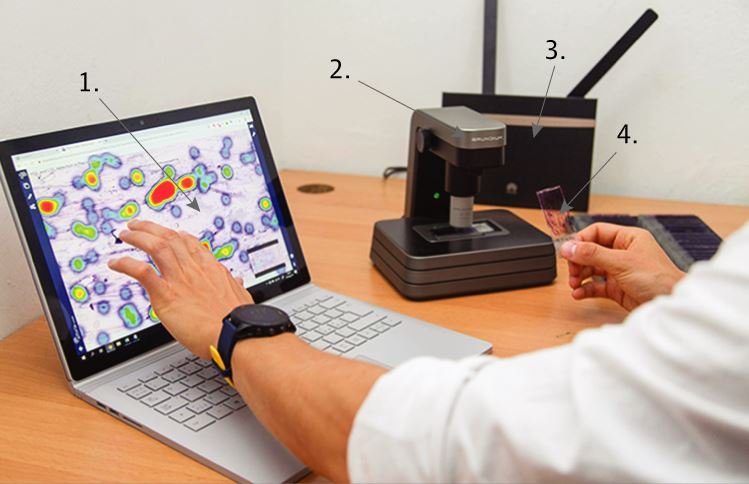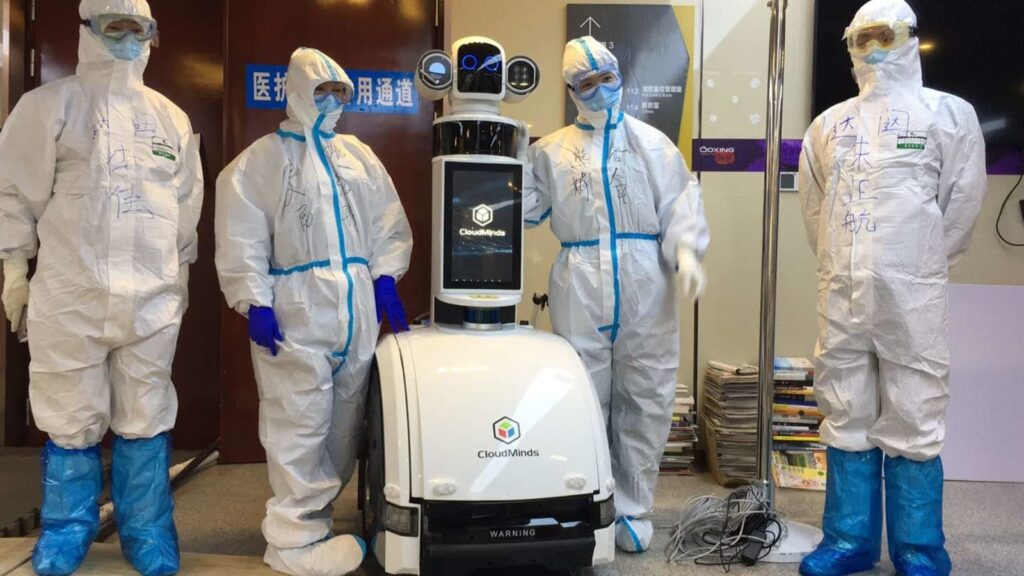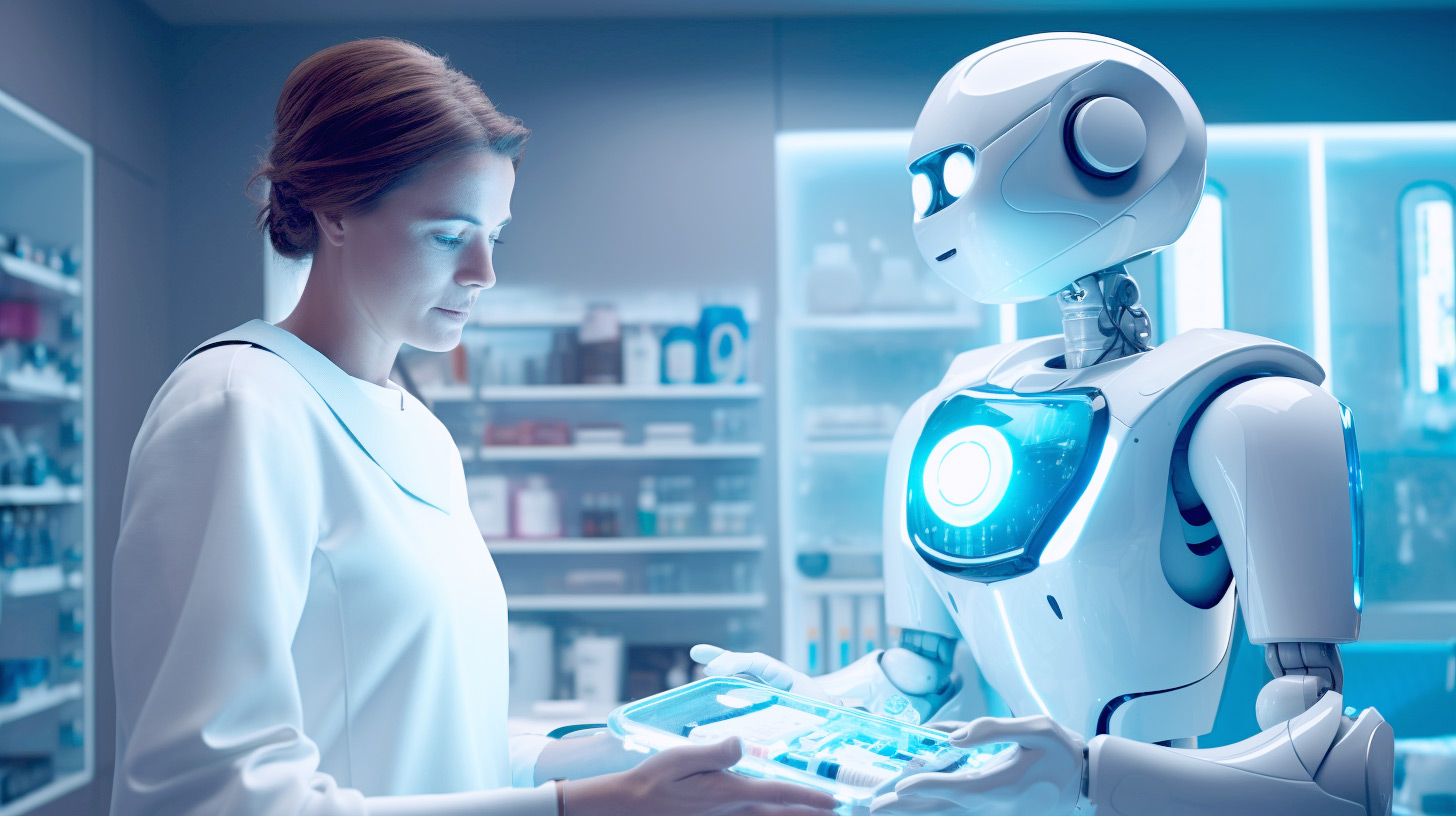We often hear about AI beating humans at chess or recommending that one pair of socks we didn’t know we needed. But beyond the memes and shopping carts, real-world AI applications have rolled up their digital sleeves and made serious contributions to the real world, like saving lives, helping doctors, and even fighting global pandemics.
This isn’t your average sci-fi plot. This is real.
Let’s dive into some incredible real-world AI stories that might just restore your faith in humanity (and in machines).
AI Detecting Cervical Cancer in Africa
When Algorithms Meet Compassion

Location: Rural Kenya, Zambia, and parts of India
Problem: Late detection of cervical cancer due to a lack of skilled professionals
Solution: AI-based visual inspection tools
Now picture this: you’re a nurse in a remote village, the internet’s spotty, and there’s no oncologist within 300 kilometers. Enter AI — the nerdy superhero.
Researchers at the National Cancer Institute (NCI) and Global Health Labs developed an AI tool that analyzes cervical images and detects precancerous changes. Think of it as a “robotic eye” that sees danger before it becomes deadly — and all it needs is a smartphone and some good lighting.
Results:
-
Over 90% accuracy in detecting pre-cancerous lesions
-
Fewer biopsies, faster diagnosis
-
Low-cost and scalable, perfect for underserved regions
This isn’t just innovation. It’s life-saving tech that fits in your pocket.
COVID-19 and AI Robots
When Nurses Got Digital Backup

Location: Hospitals in China, Italy, and the U.S.
Problem: Frontline workers are overwhelmed, at high risk
Solution: AI robots with sanitizer… and sass
When COVID hit hard, hospitals were desperate — and not just for human help. So they brought in AI-powered robots to handle tasks like delivering medication, checking temperatures, and sanitizing rooms.
Cool example?
Wuhan, China: A hospital went fully robotic during peak pandemic. Robots delivered meals, checked oxygen levels, and sanitized spaces. No complaints, no coffee breaks.
Other stars of the AI show:
-
UVD Robots (Denmark): Used UV light to disinfect hospital rooms.
-
Spot the Robot Dog (Boston Dynamics): Patrolled parks and enforced social distancing. Reality is wild.
Impact:
-
Reduced exposure for healthcare staff
-
Freed up time for human workers to focus on critical care
-
Brought sci-fi to life (in a good way)
Diagnosing Rare Diseases with AI
Sherlock Holmes, But Make It Digital

Location: USA, Germany, Israel
Problem: Years-long delays in rare disease diagnoses
Solution: AI + massive data = fast and accurate
Imagine living with a mystery illness for years — no doctor can crack it. Then real-world AI applications walk in like, “Hold my neural net.” That’s what companies like FDNA and Face2Gene are doing
These platforms use deep learning and facial recognition to identify genetic disorders through facial features. The AI spots subtle traits most doctors miss.
Example:
-
A child in the U.S. was misdiagnosed for 3 years
-
Face2Gene analyzed facial structure and flagged a rare syndrome
-
Diagnosis confirmed with genetic testing — in days, not years
Impact:
-
Early treatment starts faster
-
Emotional + financial relief
-
Doctors become supercharged diagnosticians
Bonus Round: Other Awesome AI Use Cases

Because AI’s Been Busier Than We Thought
-
Agriculture: Apps like Plantix help Indian farmers diagnose crop diseases with a photo.
-
Disaster Relief: AI predicts flood zones and directs emergency teams.
-
Wildlife Protection: Conservationists use AI to detect poachers with drone footage and camera traps.
Why These Stories Matter
It’s Not About Robots Replacing Us — It’s About Robots Helping Us
Look, AI gets a bad rap — blame Hollywood. But these stories show what happens when AI is used with empathy and purpose.
Key takeaways:
-
AI is already transforming lives (not in the distant future — today)
-
It doesn’t replace humans — it amplifies what we do
-
No, Skynet is not one of these projects (yet…)
TL;DR Table (Because You Might Be Skimming)
| Use Case | Where | What AI Did | Why It’s Awesome |
|---|---|---|---|
| Cervical Cancer Detection | Africa & India | Diagnosed precancerous conditions via images | Life-saving + scalable + cheap |
| Robots in COVID Hospitals | Global | Delivered meds, sanitized, and monitored vitals | Reduced infection risk, sci-fi dream |
| Rare Disease Diagnosis | USA, Europe | Identified syndromes using facial analysis | Diagnosis in days, not years |
Final Thoughts
When Humanity and Algorithms Team Up
We’re still in the early chapters of AI history. But these real-world AI applications prove one thing: with the right data, intention, and human touch, AI can be a game-changer, not just in tech, but in saving actual lives..
So next time someone says, “AI is going to take our jobs,” you can say:
“Maybe. But it also just saved a life in Kenya, solved a medical mystery in days, and cleaned hospital rooms better than I clean my own house. Let’s cut it some slack.”
FAQ – Real-World AI That’s Actually Doing Good Stuff
Q: Can AI really detect diseases better than doctors?
A: In some specific tasks, yes — especially when it comes to pattern recognition, like analyzing medical images. AI doesn’t get tired, doesn’t take breaks, and doesn’t zone out halfway through a shift. But remember, AI is meant to assist doctors, not replace them. Think of it as a Doctor Strange + J.A.R.V.I.S combo = the ultimate medical dream team.
Q: Isn’t AI too expensive for developing countries?
A: Surprisingly, no. Many AI solutions are designed for places with limited resources. For example, the cervical cancer detection tool only requires a smartphone and decent lighting. It’s affordable, portable, and scalable — like a power bank, but for saving lives.
Q: Are robots in hospitals here to stay after COVID?
A: Looks like it! Robots proved they’re not just cool; they’re practical. They help with repetitive tasks, reduce risks, and free up medical staff to focus on critical care. So, if you see a robot delivering meds, don’t freak out — it might be better at multitasking than you.
Q: How do AI tools like Face2Gene work? Is it safe?
A: They use facial recognition + deep learning. AI “learns” from thousands of faces with genetic disorders and can spot patterns that are almost invisible to the human eye. As for safety? Medical data is usually encrypted and kept under strict security, but it’s still important to check the privacy policies of the startup. Don’t just upload your selfie without thinking, okay?
Q: Can AI replace human empathy in healthcare?
A: Nope. AI can provide quick, accurate diagnoses, but it can’t give a hug, say “you’re gonna be okay,” or understand the nerve-wracking feeling of waiting for test results. So while AI is getting smarter, empathy is still a human thing. The best outcomes happen when both work together.
Q: Is Skynet real? Should I be worried?
A: Only if your name is Sarah Connor. But seriously — today’s AI is far from the “self-aware robot overlord” stage. All the applications we talked about are controlled by humans, and many of them are open-source, transparent, and ethical. So relax… for now.
Q: How can I support ethical AI development?
A: Easy:
Support startups or organizations using AI for social good.
Read and understand privacy policies before using AI apps.
Educate yourself — the more you know, the better you can evaluate technology.
And… please stop reposting memes about evil AI without context.
FAQ – Real-World AI That’s Actually Doing Good Stuff
Q: Can AI really detect diseases better than doctors?
A: In some specific tasks, yes — especially when it comes to pattern recognition, like analyzing medical images. AI doesn’t get tired, doesn’t take breaks, and doesn’t zone out halfway through a shift. But remember, AI is meant to assist doctors, not replace them. Think of it as a Doctor Strange + J.A.R.V.I.S combo = the ultimate medical dream team.
Q: Isn’t AI too expensive for developing countries?
A: Surprisingly, no. Many AI solutions are designed for places with limited resources. For example, the cervical cancer detection tool only requires a smartphone and decent lighting. It’s affordable, portable, and scalable — like a power bank, but for saving lives.
Q: Are robots in hospitals here to stay after COVID?
A: Looks like it! Robots proved they’re not just cool; they’re practical. They help with repetitive tasks, reduce risks, and free up medical staff to focus on critical care. So, if you see a robot delivering meds, don’t freak out — it might be better at multitasking than you.
Q: How do AI tools like Face2Gene work? Is it safe?
A: They use facial recognition + deep learning. AI “learns” from thousands of faces with genetic disorders and can spot patterns that are almost invisible to the human eye. As for safety? Medical data is usually encrypted and kept under strict security, but it’s still important to check the privacy policies of the startup. Don’t just upload your selfie without thinking, okay?
Q: Can AI replace human empathy in healthcare?
A: Nope. AI can provide quick, accurate diagnoses, but it can’t give a hug, say “you’re gonna be okay,” or understand the nerve-wracking feeling of waiting for test results. So while AI is getting smarter, empathy is still a human thing. The best outcomes happen when both work together.
Q: Is Skynet real? Should I be worried?
A: Only if your name is Sarah Connor. But seriously — today’s AI is far from the “self-aware robot overlord” stage. All the applications we talked about are controlled by humans, and many of them are open-source, transparent, and ethical. So relax… for now.
Q: How can I support ethical AI development?
A: Easy:
Support startups or organizations using AI for social good.
Read and understand privacy policies before using AI apps.
Educate yourself — the more you know, the better you can evaluate technology.
And… please stop reposting memes about evil AI without context.
Further Reading:
For more in-depth insights on AI training data and how it powers machine learning models, check out the following articles:
AI Training Data Sources: Discover where to find high-quality data and how to prepare it for AI training.
